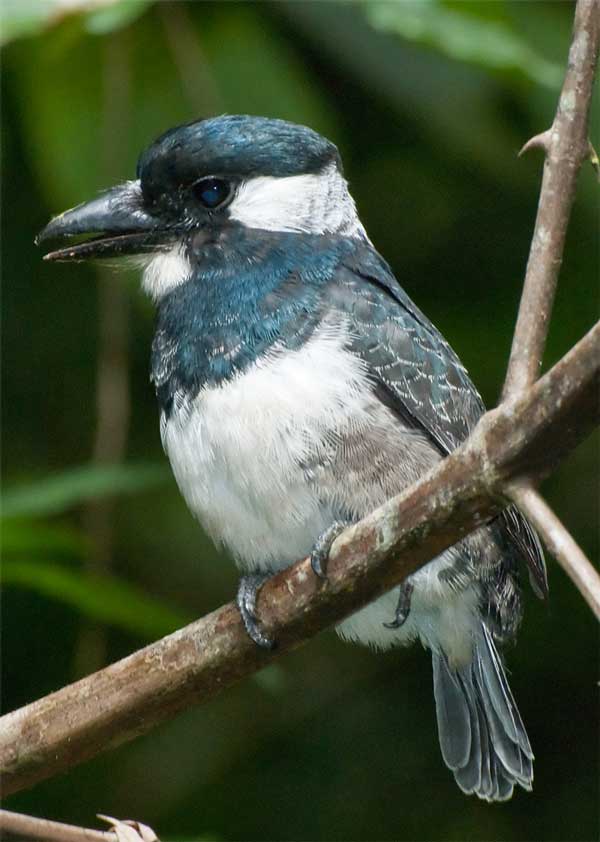
Notharchus pectoralis (*)
Superregnum: Eukaryota
Cladus: Unikonta
Cladus: Opisthokonta
Cladus: Holozoa
Regnum: Animalia
Subregnum: Eumetazoa
Cladus: Bilateria
Cladus: Nephrozoa
Superphylum: Deuterostomia
Phylum: Chordata
Subphylum: Vertebrata
Infraphylum: Gnathostomata
Megaclassis: Osteichthyes
Cladus: Sarcopterygii
Cladus: Rhipidistia
Cladus: Tetrapodomorpha
Cladus: Eotetrapodiformes
Cladus: Elpistostegalia
Superclassis: Tetrapoda
Cladus: Reptiliomorpha
Cladus: Amniota
Classis: Reptilia
Cladus: Eureptilia
Cladus: Romeriida
Subclassis: Diapsida
Cladus: Sauria
Infraclassis: Archosauromorpha
Cladus: Crurotarsi
Divisio: Archosauria
Cladus: Avemetatarsalia
Cladus: Ornithodira
Subtaxon: Dinosauromorpha
Cladus: Dinosauriformes
Cladus: Dracohors
Cladus: Dinosauria
Ordo: Saurischia
Cladus: Eusaurischia
Subordo: Theropoda
Cladus: Neotheropoda
Cladus: Averostra
Cladus: Tetanurae
Cladus: Avetheropoda
Cladus: Coelurosauria
Cladus: Tyrannoraptora
Cladus: Maniraptoromorpha
Cladus: Maniraptoriformes
Cladus: Maniraptora
Cladus: Pennaraptora
Cladus: Paraves
Cladus: Eumaniraptora
Cladus: Avialae
Infraclassis: Aves
Cladus: Euavialae
Cladus: Avebrevicauda
Cladus: Pygostylia
Cladus: Ornithothoraces
Cladus: Ornithuromorpha
Cladus: Carinatae
Parvclassis: Neornithes
Cohors: Neognathae
Cladus: Neoaves
Ordo: Piciformes
Familia: Bucconidae
Genus: Notharchus
Species: Notharchus pectoralis
Name
Notharchus pectoralis (G.R. Gray, 1846)
References
G.R. Gray, 1846. The Genera of Birds 1 pl.26
Vernacular names
English: Black-breasted Puffbird
español: Buco pechinegro
The black-breasted puffbird (Notharchus pectoralis) is a species of bird in the family Bucconidae, the puffbirds, nunlets, and nunbirds. It is found in Colombia, Ecuador, and Panama.[2]
Taxonomy and systematics
The black-breasted puffbird is monotypic.[2] It is closely related to the brown-banded puffbird (N. ordii) and some authors have proposed that they form a superspecies.[3][4]
Description
The black-breasted puffbird is 19 to 23 cm (7.5 to 9.1 in) long and weighs between 60 and 69 g (2.1 and 2.4 oz). The plumage is mostly glossy blue-black, with a white collar, cheeks, throat, and belly, a blue-black breast band, and a black tail with white tips on the feathers. The closed wing and rump show narrow white scallops. The flanks are dark gray with buffy marks. The heavy bill is black, as are the feet, and the iris of the eye is dark brown or red. The two sexes are the same, and the plumage of juvenile birds has not been described.[4]
Distribution and habitat
The black-breasted puffbird is found from the Canal Zone of Panama east into central Colombia and south through western Colombia into northwestern Ecudador. It inhabits humid lowland rainforest and secondary forest from sea level to 1,000 m (3,300 ft). It is seldom found near forest edges, and is more restricted to forests than its close relatives, but is often found near running water. It is usually found in the canopy, but will descend to the forest floor to pursue prey flushed by army ant swarms.[4]
Behavior
Feeding
The black-breasted puffbird hunts from a perch by diving on its prey and will also follow army ant swarms. It beats its catch on the perch before eating it. It takes a range of prey species, including centipedes and millipedes, scorpions, spiders, cockroaches, mantises, grasshoppers, beetles, and lizards.[4]
Breeding
The black-breasted puffbird's breeding season spans from March to May in Colombia and March to July in Panama. Both parents excavate the nesting burrow in an arboreal termitarium, typically from 2.3 to 12.5 m (7.5 to 41 ft) high. The clutch size is three eggs, but no more than two fledged young from a brood have been observed. Both parents incubate the eggs.[4]
Dickcissel male perched on a metal pole singing, with neck stretched and beak open.
Songs and calls
Listen to black-breasted puffbird on xeno-canto
Vocalization
The black-breasted puffbird's song is "10–30 loud 'kwee' whistles followed by 3 or so lower, slower 'whew' whistles ending with a few fading 'wheet-whew' wolf-whistles". It also makes a "rasping 'chah-chah-chah'" call when disputing territory.[4]
Status
The IUCN has assessed the black-breasted puffbird as being of Least Concern. It has a large range and a population of at least 50,000 mature individuals, though the latter is believed to be decreasing.[1] The species is generally uncommon, but may be overlooked frequently due to its habit of remaining motionless for hours. Habitat disturbance is a threat.[4]
References
BirdLife International (2020). "Black-breasted Puffbird Notharchus pectoralis". IUCN Red List of Threatened Species. 2020. Retrieved 29 October 2021.
Gill, F.; Donsker, D.; Rasmussen, P. (July 2021). "IOC World Bird List (v 11.2)". Retrieved 24 July 2021.
Remsen, J. V., Jr., J. I. Areta, E. Bonaccorso, S. Claramunt, A. Jaramillo, D. F. Lane, J. F. Pacheco, M. B. Robbins, F. G. Stiles, and K. J. Zimmer. Version 24 August 2021. A classification of the bird species of South America. American Ornithological Society. https://www.museum.lsu.edu/~Remsen/SACCBaseline.htm retrieved 24 August 2021
Rasmussen, P. C. and N. Collar (2020). Black-breasted Puffbird (Notharchus pectoralis), version 1.0. In Birds of the World (J. del Hoyo, A. Elliott, J. Sargatal, D. A. Christie, and E. de Juana, Editors). Cornell Lab of Ornithology, Ithaca, NY, USA. https://doi.org/10.2173/bow.blbpuf1.01 retrieved 29 October 2021
Retrieved from "http://en.wikipedia.org/"
All text is available under the terms of the GNU Free Documentation License

